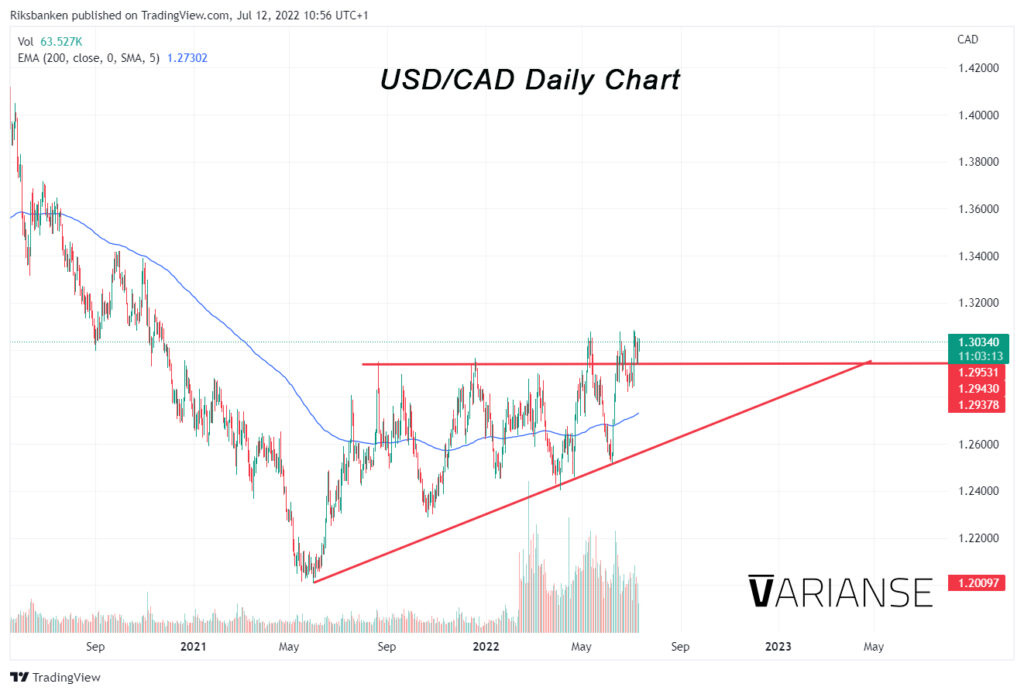With forex traders squarely focused on the collapse of the EUR and GBP, USD/CAD may not be getting much airtime at the moment. Nevertheless, the price at the time of writing was again pushing up above 1.30, after two failed attempts to stick above that level in May and June this year.
Prior attempts to break above the 1.2937 to 1.2943 resistance area failed on the retest, but this latest thrust higher has found some support above that region. For me, 1.30 remains a crucial level to watch as it marks the September 2020 swing of the prior downtrend. The ascending triangle pattern that fully formed in May is also hard to miss.

Of course, one chart pattern or support/resistance level doesn’t make a trade. Crude oil price gyrations also certainly impact USD/CAD. Given that the Bank of Canada is also widely expected on Wednesday to raise its key interest rate to 75 bps to 2.25%, being bearish CAD at the moment might seem misplaced. Like the Fed, the Bank of Canada has been talking tough on inflation. According to a recent Reuters poll, economists expect another 50 bps hike in September. After that, however, there is mixed agreement on the future degree of tightening.
One big concern is the Canadian housing market, which is already feeling the heat from higher interest rates. Home resales in May were down by 8.6% from April - the third consecutive drop. After falling 1.1% in April, Canada’s national MLS Home Price index declined by another 0.8% in May. Most believe the recent cooling in Canada’s housing market won’t deter the Bank of Canada from hiking interest rates. But the big question for traders, and ultimately for USD/CAD, should be what more the Bank of Canada can signal on Wednesday regarding interest rate hikes given its current constraints.
